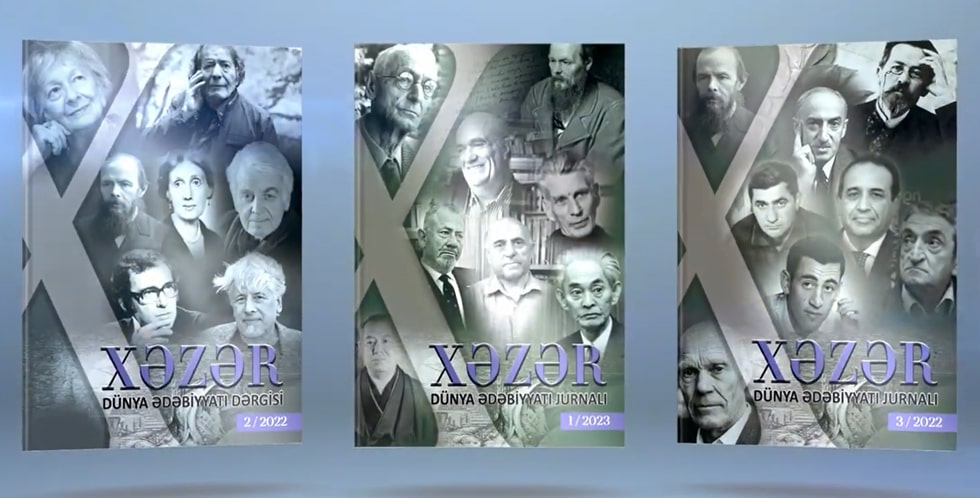Ashraf's World

Fazil Rahmanzade, a journalist, talks about how he made acquaintance with artist Ashraf Heybet,.
"... I walked into the street having galloped through work at the Azerbaijani Embassy to Germany. I was just about to open the door of the embassy car when a man stepped toward me.
"Excuse me, can I join you if you go downtown?" he asked.
As he addressed to me in perfect Azerbaijani, I also spoke to him in the same language:
"You are welcome, with great pleasure!"
So, we made acquaintance just in the car. Ashraf Heybet introduced himself: "I am an artist. I have moved to Germany recently and live in Koblenz. Well, I had something to do at the embassy."
Ashraf Heybet was born in 1951 in Icheri Sheher. He is a graduate from the Baku-based Azimzade Art School and the Tbilisi State Academy of Arts. Having received a higher education, the young artist had to leave his hometown. The 1980 Olympic Games in Moscow was near at hand. As a muralist, Ashraf was invited to Moscow to work for one of the sport venues.
The artist looks back into the blank of that period: "The most memorable moment from the exhibitions in Moscow was my first solo exhibition held at Moscow State Institute of International Relations (MGIMO), where our distinguished President Ilham Aliyev was working then. Thanks to him and other compatriots living in Moscow I was able to showcase my works.
The Baku-born painter lived in Moscow for 18 years. But it was difficult for him to be able to live under red tape conditions at that time. He was anxious about freedom; he wanted to express his thoughts and emotions on canvases without preconceived restrictions. Ashraf knew that in many countries artists were free in their own 'artistic world'. At last, the USSR collapsed and, like many intellectuals, he gained possibility to freely express his feelings. Without thinking twice, he moved to Germany. Ashraf first lived in Mainz. The longing for his native land instigated him to seek contact with compatriots.
During his meeting with Azerbaijan's Ambassador to Germany Huseynagha Sadigov he spoke about his desire to open Baku Cultural Centre in Mainz. The diplomat endorsed his idea.
Ashraf Heybet in each painting seeks to recreate the image of the native land, and if to put together the artist's works, we can gain a full understanding of the greatness of Azerbaijan, and the richness of its culture and traditions. The paintings "Streets of Icheri-Sheher", "The Azerbaijan Suite", "Baku", "Absheron", and "Eastern Love" take the audience to an ancient Land of Fire, and when gazing upon them, one can forget country sickness for a moment.
For the first time the Vatican did organize an exhibition for a Muslim artist, which was an unprecedented experience in Islamic world. Heybet's Christian-themed paintings sparked a massive outcry, and no one expected such a turn in the artist's oeuvre, the Muse for whom was always Azerbaijan. His paintings on Biblical themes were in great popularity with the audience. Much noteworthy is that no artist from Turkic world had addressed to the topic prior to Ashraf, who managed to pass this peculiar creative exam, and after the exhibition in Vatican, the artist's canvases were exhibited in Rome and then in Switzerland, Belgium, and other European countries. In accordance with the applicable procedure, the Palace of the Vatican Office would usually host exhibitions of classics, but Ashraf Heybet as a representative of modern art school was the first to show his paintings.
A 30-minute program that appeared on Vatican Radio was dedicated to the show embracing Ashraf Heybet's success. A rapturous glance review from International Christian Gazette published in Germany called the exhibition opening as a momentous event for Vatican placing a high value on his finest artistry.
Fazil Rahmanzade
AND OTHER...
-
 Khagani Shirvani’s Creativity on the Literary Portal of England
Khagani Shirvani’s Creativity on the Literary Portal of England
“Write Out Loud”, the leading poetry portal of England, has posted in English the ghazal “A Love Song” by the great Azerbaijani poet Khagani Shirvani as part of the...
-
 Isi Malikzade’s Creativity on German Literature Magazine
Isi Malikzade’s Creativity on German Literature Magazine
LESERING.de, a popular German e-literature magazine, has posted in German the short story Salt by Isi Malikzade, the notable Azerbaijani writer, as part of the AzSTC project “Azerbaijan Literature in an International Virtual World”.
-
 Movlud Movlud’s Short Story on Turkish Portals
Movlud Movlud’s Short Story on Turkish Portals
“Detayhaberler.com”, “Dibace.net” and “Haber.232.com”, leading Turkish portals, have posted in Turkish the short story “We Have Already Grown Up” by the...









